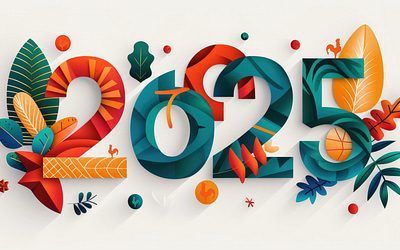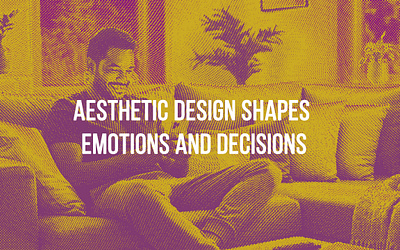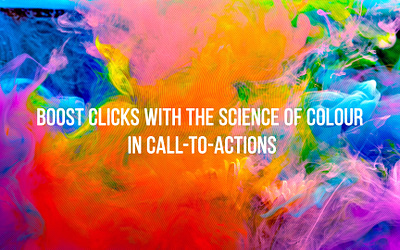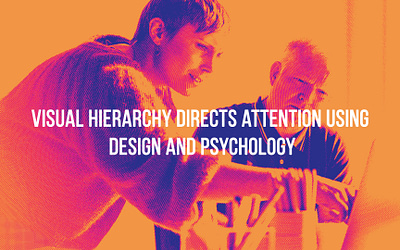Table of contents
Discounts have long been a powerful tool in marketing, enticing consumers with the promise of immediate savings. While they effectively drive short-term sales, businesses often face the challenge of leveraging discounts without damaging their brand value. The psychology behind discounts taps into emotional and cognitive triggers, leading consumers to act impulsively or feel like they are missing out. However, if misused, discounts can erode a brand’s perceived quality and create an expectation among customers that undermines long-term profitability.
The balance between using discounts to drive conversions and maintaining a strong brand image is crucial for businesses, especially in today’s competitive market. Brands must be strategic in structuring their offers to attract customers while ensuring that these promotions do not devalue the brand or reduce customer loyalty over time.
This blog explores the science behind the psychology of discounts, how they influence consumer behaviour, and how businesses can structure offers that convert without harming their brand reputation.
The science behind discount psychology
Discounts are designed to create a sense of urgency and scarcity, two emotional triggers that drive quick decision-making. Limited-time offers, flash sales and exclusive deals tap into consumers’ fear of missing out (FOMO). This phenomenon is deeply rooted in human psychology, where the perception of a limited opportunity triggers an immediate emotional response, leading consumers to make quicker purchasing decisions. Moreover, the promise of instant gratification through immediate savings amplifies this emotional reaction. Customers feel a sense of accomplishment by securing a bargain, reinforcing the idea that they are making a smart financial decision.
Cognitive biases at play: anchoring and framing effects
Discounts also take advantage of cognitive biases, particularly anchoring and framing effects. Anchoring refers to the tendency for individuals to rely heavily on the first piece of information they encounter when making decisions. In the context of discounts, the original price of a product acts as an anchor, making the discounted price seem significantly more attractive, even if the difference is not substantial. This leads consumers to overvalue the savings and undervalue the actual worth of the product.
Similarly, framing plays a crucial role in how discounts are perceived. For example, a 20% discount can be framed as “Save £20 on a £100 purchase” or “Get this product for only £80”. Both statements present the same deal, but the way the offer is framed can alter how attractive it seems to the customer. These psychological effects are powerful tools in influencing consumer behaviour, as they manipulate the way people evaluate options and perceive value.
Social proof and the fear of missing out (FOMO)
The influence of social proof and FOMO further intensifies the impact of discounts. Consumers are more likely to take advantage of a discount if they perceive that others are doing the same. Seeing products sell out quickly or reading reviews from satisfied customers who benefited from a discount creates a sense of urgency. This fear of missing out not only prompts quicker purchases but also encourages customers to act impulsively, fearing that they will lose an opportunity to join others in making a “smart” decision. The combination of social proof and FOMO drives conversions by creating a perception of high demand and exclusivity, even if the promotion is widely available.
Decision-making and the two-system theory
Daniel Kahneman‘s two-system theory of decision-making offers valuable insights into how discounts influence consumer choices. According to Kahneman (2015), the human brain operates using two systems: System 1, which is fast, intuitive, and emotional, and System 2, which is slow, deliberate, and logical. Discounts primarily appeal to System 1 by triggering immediate, emotional responses. The sense of urgency, scarcity, and potential savings push consumers to make decisions quickly without fully engaging System 2’s logical and reflective processes.
In the context of discounts, most purchasing decisions are driven by System 1, where emotions and cognitive biases dominate. Brands that understand this dynamic can structure their offers in ways that prompt System 1 thinking, using psychological triggers to drive conversions. However, over-reliance on System 1 can lead to buyer’s remorse or decreased brand loyalty if customers later question the value of their purchase once System 2 kicks in. Therefore, it is important for brands to balance these triggers with a focus on long-term value and customer satisfaction.
How discounts influence purchasing decisions
Discounts have a direct impact on consumer purchasing behaviour by altering the perceived value of a product. When customers encounter a reduced price, they often shift their focus from the product’s quality or features to the savings they are about to make. This shift taps into their desire for a good deal, even if they didn’t initially intend to buy the product. This phenomenon is known as impulse buying, where discounts trigger quick purchasing decisions based on perceived savings rather than need or utility. A well-timed discount can nudge a hesitant buyer into making a purchase, especially when combined with emotional triggers like urgency and exclusivity.
The long-term effects of habitual discounting on customer loyalty
While discounts are effective in driving short-term sales, they can have unintended consequences for long-term customer loyalty. Consumers may become conditioned to expect frequent discounts, which can devalue the overall brand and diminish their willingness to pay full price. Over time, this expectation can lead to customers holding off on purchases, waiting for the next sale, which reduces the effectiveness of non-promotional marketing efforts. For brands, the challenge lies in maintaining a balance between offering promotions and preserving the perceived value of their products or services. Habitual discounting risks creating a customer base that is price-driven rather than loyal to the brand’s quality or experience.
Balancing value perception with short-term gains
Brands need to carefully weigh the benefits of immediate sales boosts from discounts against the potential damage to their long-term value perception. Offering too many discounts can harm a brand’s premium image, making customers question the true value of its products. A strategic approach involves using discounts sparingly and in ways that align with the brand’s values, ensuring that promotions enhance rather than undermine the brand’s overall positioning. Limited-time offers loyalty-based discounts, or exclusive promotions for certain customer segments can help maintain a sense of value while still encouraging purchases.
The dangers of over-discounting
Over-discounting can lead to a phenomenon known as discount fatigue, where customers become desensitised to promotions and less motivated to take action. If consumers are constantly exposed to discounts, the perceived urgency and value of those offers diminish, leading to decreased effectiveness over time. Furthermore, over-discounting can create a race to the bottom, where customers come to associate the brand with cheap prices rather than quality, undermining the brand’s ability to compete on factors other than price. This can result in thinner profit margins and a lower perceived brand value, making it difficult to recover without a significant shift in marketing strategy.
Dilution of brand value and the price-quality association
Frequent discounting can erode the association between price and quality that many premium brands rely on. Consumers often equate higher prices with better quality, and when a brand consistently offers discounts, it can inadvertently signal to consumers that its products are not worth their original price. This can damage the brand’s credibility, especially in markets where perceived quality is a key purchasing factor. Luxury brands, for instance, avoid frequent sales because they rely on exclusivity and high perceived value to maintain their prestige. A carefully managed discount strategy is essential to prevent the dilution of brand value and maintain a strong price-quality perception.
How to spot signs of discount fatigue in your customer base
Identifying discount fatigue in a customer base can help brands adjust their promotional strategies before long-term damage occurs. One key sign is declining engagement with promotional emails or advertisements. If customers are no longer responding to discounts with the same level of enthusiasm or are delaying their purchases even when offers are available, it may indicate that they have grown accustomed to frequent promotions and are no longer motivated by them. Another indicator is a decrease in the effectiveness of discounts in driving sales; if the same type of offer generates less revenue over time, it may suggest that customers are becoming fatigued. Monitoring customer behaviour and sales data can provide insights into whether discount strategies need to be re-evaluated.
Structuring discounts that convert without cheapening the brand

Using targeted offers and personalised discounts
One of the most effective ways to avoid cheapening your brand with discounts is to use targeted offers that appeal specifically to certain segments of your customer base. Personalised discounts, such as offers based on past purchases or customer preferences, can enhance the perceived value of the promotion without making it seem like a generic price cut. When customers feel that an offer has been tailored for them, they are more likely to see it as a reward for their loyalty rather than a sign that the product’s regular price is too high. Personalised offers also help maintain a sense of exclusivity, as customers feel that they are receiving something unique rather than a mass-market deal.
Limited-time offers and exclusivity to maintain brand prestige
Another way to structure discounts while preserving brand value is to create a sense of urgency and exclusivity. Limited-time offers work because they tap into the psychology of scarcity, making consumers believe that they need to act quickly to take advantage of the deal. This urgency encourages immediate purchases and prevents customers from waiting for another promotion. In addition, exclusive discounts offered only to loyal customers or VIP members can enhance brand prestige.
Creating offers that reward loyalty without sacrificing perceived value
Loyalty programmes are a great way to offer discounts without damaging the perceived value of your products or services. Crucially, loyalty-based offers are perceived as earned rather than given away freely, which helps to maintain the product’s perceived value. These types of discounts can foster long-term relationships with customers, as they feel appreciated for their loyalty while the brand avoids the pitfalls of widespread discounting that can erode brand equity. Properly structured loyalty programmes can boost conversions while preserving the brand’s premium image.
The psychology of bundling and added value
Offering value-added deals, such as product bundles or service enhancements, can often be more effective than direct price reductions. Bundling allows customers to perceive they are getting more for their money without the need for a discount on individual items. From a psychological standpoint, consumers view bundled products as a better deal because they are receiving additional value, even if the actual cost savings are minimal. This strategy enables brands to promote offers without directly reducing prices, preserving the perception of premium value. Additionally, added-value offers, like free services or extended warranties, can differentiate a brand and make customers feel they are receiving something extra, further enhancing the brand’s perceived value.
How to offer non-price incentives like free shipping or extended warranties
Non-price incentives such as free shipping, complimentary accessories, or extended warranties can drive sales just as effectively as discounts, without lowering the product’s perceived worth. Free shipping, in particular, has become a powerful motivator for online shoppers, reducing friction at the checkout stage and increasing the likelihood of completing a purchase. Extended warranties or customer support packages provide an additional layer of value, appealing to consumers who prioritise long-term product reliability and service. These types of incentives can be framed as added benefits of choosing your brand, allowing you to enhance the offer without devaluing the core product.
Why experiential rewards outperform direct discounts in brand building
Experiential rewards, such as access to exclusive events, personalised services, or special experiences, often have a greater impact on customer loyalty and brand perception than straightforward discounts. These rewards appeal to the emotional side of consumer behaviour, providing memorable experiences that customers associate with your brand. For example, offering VIP event access or personalised consultations not only enhances the customer experience but also reinforces the brand’s premium status. Experiential offers also foster a deeper emotional connection with customers, as they go beyond simple price reductions to offer something truly unique. This strategy helps to build long-term relationships and brand loyalty, making it a powerful alternative to traditional discounting
Conclusion
Crafting discount strategies that protect and enhance brand equity requires a careful balance between driving immediate sales and maintaining long-term brand value. Discounts, when used thoughtfully, can trigger powerful emotional and cognitive responses, prompting consumers to act quickly and feel satisfied with their purchases. However, the overuse of discounts or poorly structured promotions can erode the perception of quality, lead to discount fatigue, and undermine a brand’s ability to command premium pricing in the future.
The psychology behind discounts is rooted in how consumers make decisions, particularly the interplay between emotional impulses and rational thought processes. Brands that understand how to tap into these cognitive biases, such as scarcity and framing, can create compelling offers without cheapening their products. By focusing on targeted, personalised discounts, brands can foster customer loyalty, making customers feel valued rather than conditioned to expect constant price reductions.
Moreover, shifting the focus from pure discounts to value-added offers, such as bundling, experiential rewards, or non-price incentives like free shipping, can enhance the customer experience without lowering the perceived value of the product. These alternatives allow brands to differentiate themselves in the market, offering unique value propositions that go beyond mere price cuts.
Ultimately, a well-executed discount strategy should be part of a broader, holistic approach to marketing that includes brand positioning, customer relationship management, and long-term loyalty-building efforts. Brands that successfully integrate discounts into their strategy can boost sales while reinforcing their market position, ensuring they maintain both short-term profitability and long-term growth.
FAQs
How often should a brand run discounts?
The frequency of discounts depends on your brand’s market position and target audience. For premium brands, infrequent but well-timed promotions can create a sense of exclusivity and preserve perceived value. In contrast, brands competing primarily on price may offer discounts more frequently to remain competitive. It’s essential to avoid conditioning your customers to expect constant sales, as this can lead to discount fatigue and erode brand loyalty.
Are personalised discounts more effective than general ones?
Yes, personalised discounts tend to be more effective than general discounts. Personalised offers make customers feel valued and recognised, increasing their emotional connection to the brand. Tailoring discounts based on customer behaviour, purchase history, or preferences enhances the perceived relevance of the offer, leading to higher conversion rates and greater customer satisfaction. It also helps prevent the overuse of broad discounts that can damage brand value.
What are some alternatives to discounts that boost conversion?
Non-price incentives such as free shipping, product bundling, loyalty points, or extended warranties can boost conversions without reducing the perceived value of the product. Value-added offers such as these enhance the customer experience and provide a reason to choose your brand without resorting to price reductions. Experiential rewards, such as exclusive events or VIP access, can also foster deeper customer loyalty and engagement, especially for premium brands.
How can a brand recover from over-discounting?
To recover from over-discounting, a brand needs to gradually reduce the frequency of promotions and refocus on enhancing its value proposition. Emphasising product quality, customer service, and unique brand attributes can help rebuild the perception of worth. Implementing loyalty programmes, limited-time offers, or exclusive deals for specific customer segments can shift the focus from discount-driven purchases to long-term brand loyalty. It’s important to reset customer expectations and re-establish the brand’s premium position through consistent messaging and strategic marketing.
What is` the best way to test the effectiveness of a discount strategy?
A/B testing is one of the most effective methods to evaluate the impact of a discount strategy. By offering different groups of customers varying discount structures (e.g., percentage off vs. value-added offers) and measuring their responses, brands can identify which approach generates the most conversions while maintaining profitability. Additionally, tracking metrics such as customer lifetime value, repeat purchase rates, and the average order value can provide insights into how discounts affect long-term brand health and customer behaviour.





